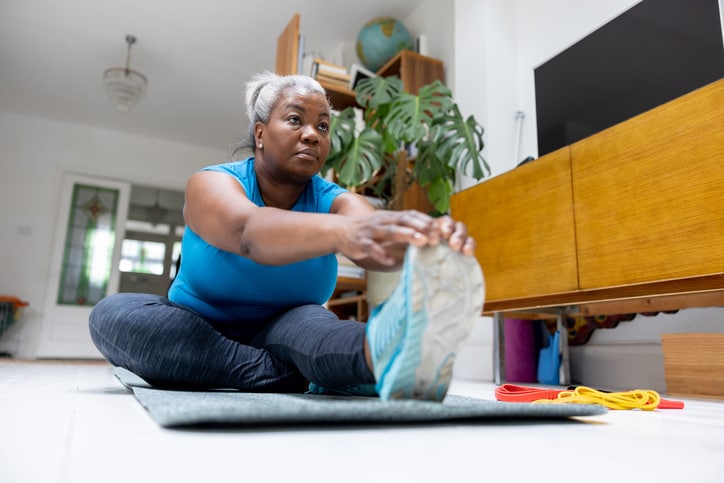Whether they’re downsizing to an apartment or taking a room in a relative’s home, moving can be a very challenging event for an aging loved one for various reasons. Carla Marie Manly, Ph.D., a clinical psychologist and author of “Aging Joyfully” says that might be in part because the person moving isn’t totally comfortable with the idea, and an angry or irritable mindset could make the process more stressful.
And though Manly notes there might be fewer challenges when the senior is up for the change, it doesn’t always mean the situation is seamless.
“Even when an aging family member is accepting of the move, the psychological and physical toll involved in sorting through items, packing, cleaning and moving can be tremendously exhausting for the entire family,” she says.
Here are a few ways to help the transition go smoothly.
1. Don’t take on the task solo
Often, there’s one family member heading up the move, either by the senior’s choice or by default, says Manly.
“Whether due to physical distance, busy schedules or family dynamics, an imbalance in the weight of responsibility can have long-term consequences, including feelings of resentment, financial duress and emotional exhaustion,” she says. She recommends families talk candidly, in a kind and respectful manner and find ways to share tasks. One example she offers: Family members who can’t be there in person might be able to help financially instead.
2. Mimic the new setup in their current home
Many older adults are moving to smaller spaces, so before the packing begins, prep with this tip, which senior move managers often employ: Set up a room in their home to match the size that same room will be in their new digs. Mary Kay Buysse, executive director of the National Association of Senior Move Managers offers the kitchen as an example. If their current kitchen is big, but they’ll only have three cabinets in the new home, tape off all but three cabinets in their current kitchen so they can visualize how much room they’ll have — and be better able to decide what to keep and what to toss, Buysse says.
3. Talk through the packing process
Speaking of packing, if your family member is able, Manly suggests asking for the specific ways they want to be involved: Maybe they want to sort through particular pieces or clean out certain drawers, she says.
“Giving the aging person a sense of choice in moving-related matters, even if they are minor choices, can make a great deal of difference to their sense of dignity,” she says.
What if they’re not up for it — or they can’t? Then, “the transition is often easier if the packing and moving is done when they are off-site or otherwise engaged,” she says.
4. Stay organized
The actual logistics of moving someone else can be overwhelming, so staying on top of things is important.
“If you can, create some sort of system to organize the move,” says Chantay Bridges, CNE, SRES, a senior real estate specialist in Los Angeles.
Use a spreadsheet, checklist or even a color-coding method. When Sandy Hapoienu, of Connecticut, helped her mother move, for example, she created an Excel spreadsheet — and also taped up colored paper to help movers know what went in which rooms.
5. Start packing ‘emotionally-neutral’ rooms first
Certain rooms, undoubtedly, hold more emotion for your loved one — whether that’s the den, where your mom loved to read, or the dining room, where they hosted family dinners. And though you might be tempted to start with those rooms, opt to pack “emotionally-neutral” rooms first, says Buysse.
“Each family has to consider where the love language, if you will, of that family is stored,” she says.
Tackle those rooms last, because by the time the end rolls around, you’ve figured out the process and the emotional impact isn’t quite as strong, she says.
Also, allow plenty of time for the move. It might have taken 40 years to build that home into the lifestyle that that older adult enjoyed, so you don’t want to dishonor it by trying to “downsize it in 48 hours,” Buysse says.
6. Get creative with what your loved one takes to their new home
Remember that many possessions are more than just objects; they’re pieces that provide familiarity and stability in an ever-changing world, and that also hold precious memories — a vase that reminds you of anniversaries or birthdays, a quilt that evokes feelings of comfort or love, says Manly.
“As such, it is vital that a person’s possessions be honored and treated with respect during the moving process,” she says. “When the possessions are moved with conscientious care and love, the person who is moving will feel that love. And, when the person arrives at the new destination, their key possessions will be waiting as a sign of comfort, security and love.”
And while you can bring a few of the most special items, it’s not always feasible to take everything. To ease the process, think creatively. When dealing with collections, Buysse offers this example: One of the organization’s members had a client with a collection of miniature teapots. Since the client couldn’t take them all with her, the senior move manager photographed them — and turned the photos into a poster, which now hangs in the client’s new space. The client then kept a few favorites, distributed some to family members and the senior move manager helped donate the rest to a collectible organization.
7. Go the professional route
Working with a professional — whether that’s a moving company, a senior move manager or other professional help — can be beneficial. For instance, Buysse compares a senior move manager to a general contractor or project manager.
“There’s a lot of moving parts to a move when you’re downsizing a home of 30, 40 or 50 years, and she or he brings it all together,” she says.
That could be by helping with things like deciding what to toss and where to donate items, or offering alternative solutions, like digitizing personal items so far-flung family members can choose what they might want and more, she says.
8. Allow space for grief
“Many people are not aware that moving often triggers a sense of deep grief,” says Manly. “When we grieve the loss of something, be it a person, much-loved home or way of life, feelings arise such as sadness, anger, depression.”
She advises family members to keep this in mind — and to gently talk about and try to relate to their loved one. For instance, a daughter might talk to her mom about how she was excited to move when she got married, but was also sad in some ways, too.
“Discussions such as this bring the issue into the open in an indirect way that can invite comments and stories from the aging family member who is being moved,” says Manly.
But, she says, if your loved one has unusual levels and chronic patterns of anger, sadness or depression — exhibiting behaviors like refusing to eat or experiencing disturbed sleep or crying bouts — turn to professional help. The key is that the behavior is unusual for them, so for example, a generally outgoing person becomes withdrawn, Manly says.
“Of course, it’s important to allow for a period of natural adjustment, yet if the person does not return to his or her normal behaviors within a month or so of the move, it’s important to seek support,” she says.
9. Help set up the new space
Once your loved one is settled, help make them feel comfortable and “at home.”
“If an aging person has a precious plant or other key belongings that are emotionally important, make every effort to have those items prominently in place upon the move into the new space,” says Manly.
Jenn Jones, of Minneapolis — who helped move her grandparents, and later, her father — suggests hiring a home staging company to help “recreate the person’s ‘home’ in the new space.”
10. Embrace the past while looking toward the future
“Strive to strike a balance between focusing on the positive memories held in the existing home, while also focusing on the positive memories and events that will take place in the new home,” says Manly.
She recommends creating a calendar of celebrations in the new home, like movie nights, Thanksgiving or other festivities.
As Buysse points out, a move can be “emotional for all parties involved, but if you do it thoughtfully and really give it the time and effort it deserves, it can be a really uplifting and positive experience.”




